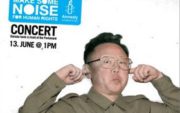Undoubtedly sensitive to the intolerable pressures that this would impose upon Vietnamese producers, the Vichy administration under Admiral Decoux balked. Citing the research of French agronomist Pierre Gourou, population pressure was of the order of 3,500 persons per square mile. On 2 September 1944, the Japanese commandeered four Chinese-owned steamships to carry military personnel and supplies between Phnom Penh and Saigon. On 6 August 1945 the first atom bomb gave the signal of the beginning of the end of Japan’s military, might. This soon changed after Germany invaded Russia and Japan began hostilities with the Allies by attacking Pearl Harbor. Instead, it was assumed by the Viet Minh. Economically, Japan had used Indochina under the Vichy administration as a source of industrial and food procurement, from coal to rubber, to a range of industrial crops and, especially rice from the surplus-producing Mekong delta region. The need to diversify crop production was not ignored given understandings of the risks of monoculture in situations of crisis and food insufficiency, and close monitoring of agricultural production and human needs became a finely honed bureaucratic procedure at the local, regional and federal (Indochinese) levels. for yet another 5 years. No distinction was made as to whether the groups in question were subordinated to a recognized liberation movement or whether they pursued aims of their own or of a particular political party. S$ 27.83. March 1942, the Royal Netherlands East Indies Army surrendered to the Japanese invading forces. who became a technical advisor to the Vietnamese; killed in combat in 1946. Owing to the wars in China and Europe, the China-Shanghai and Hong Kong market was lost. Major Ishii Takuo, a young officer of the 55th Division in Burma, deserted in Cambodia in December 1945 with several comrades and made his way to Vietnam, where he became a colonel in the Viet Minh, provisional head of the Quang Ngai military academy, and later “chief advisor” to Communist guerrillas in the south. Giap arranged for them all to receive Vietnamese citizenship and false identification papers. directed the Viet Minh’s “International Committee for the Aid and Support of the Government of the DRV.” In Quang Ngai, a Viet Minh officers’ school had six Japanese officers on the faculty; in southern Trung Bo province, 36 out of 50 military instructors were Japanese. 21 Nguyen Khac Vien, The Long Resistance (1858-1975), Foreign Languages Publishing House, Hanoi, 1975, pp.92-95. Countries like China, Korea and Vietnam would be transformed into vassal states ruled by puppet governments. They knew Ho was a Communist, but this was not an issue at the time because the United States was allied with the Communist Soviet Union in the war against Germany. All elements of Pham Cao Duong's argument are cogent and convincing, as the paradox of food availability and unaffordability still haunts international relief agencies confronting analogous situations to the present day. Some specialists, including doctors and ordnance experts, were forced to work for the Viet Minh against their will. Reconstruction, Black Codes were enacted in several former states in the Confederacy. 40 According to Mickelsen, “A mission of vengeance,” the commander in chief of the French army in Vietnam, General Eugene Mordant, was convinced that the Fourteenth Air Force had deliberately bombed Hanoi in December 1943, and again in April 1944 in retaliation for Decoux's policy of surrendering downed American fliers to the Japanese. The post How did the Japanese occupation of Vietnam complicate Vietnamese attitudes toward the French?Explain appeared first on Essay Quoll. 2 Amartya Sen, Poverty and Famines: An Essay on Entitlement and Deprivation, Oxford University Press, Oxford, 1981. There is a recently published book “Vietnam” by Goscha, Christopher E, 2016 ISBN-13: 9780465094370 which to me to be a excellent history. The Japanese did release some grain from captured French depots to urban people, in part to discredit the French. The frequently witnessed Chinese-Vietnamese drama — in which China seeks to control Vietnam while the Vietnamese maneuver to rid themselves of that control — was re-enacted in 1945-1946. Ho Chi Minh announces Vietnam's independence. Clockwise from top: After the fall of Dien Bien Phu supporting laotian troops fall back across the Mekong River into Laos; French Marine commandos wade ashore off the Annam coast in July 1950; M24 Chaffee American light tank used by French in Vietnam; Geneva Conference in 21 July 1954; A Grumman F6F-5 Hellcat from Escadrille 1F prepares to land on the French carrier Arromanches (R95) operating in the Gulf of Tonkin. Normally - or before the bombing started to interrupt the timetable - a journey from Saigon to Hanoi took 42 hours, at an average of 42 km per hour with somewhat lower speed on newly opened track between Nha Trang and Quang Ngai. More generally, though, it is fair to conclude from the handling of the 1937 crisis that the French adopted a strict managerial approach to food sufficiency across Indochina, backed by the regular collation of province level statistics. Many had Vietnamese wives or girlfriends. The author was born in 1940 and spent his childhood in two small villages, the paternal and the maternal, in southern Vietnam: Binh Chuan and Tuy An (An Phu). The result was that Indochina — particularly after France’s defeat in June 1940 — was left wide open to ever increasing Japanese pressures. //-->, In Vietnam the French administration sided with the fascist Petain regime rather than electing to join the Free French resistance. Many new weapons (bazookas, submachine guns) as well as radio sets and instructors were parachuted to them so that certain of the guerrilla units soon gained an appreciable amount of combat strength and efficiency. Combined with falling rice prices and a constant tax burden, the result was to ignite mass peasant protest along with communist-inspired attacks on the administration.9 It is true that the French introduced a range of plantation or export crops, as with rubber, tobacco, coffee, etc., but neither, as demonstrated below, did colonial economic managers ignore the need to maintain a basket of food crops to tide over emergencies, such as fitting long-established peasant cultivator practice.10 Generally, the paix Français in Indochina was marked by its managerial response to famine and hunger, even as large numbers of people, particularly mountain-dwellers and those in more marginal settings, barely survived in the natural economy. Dismissively, Konogaya asserted, aside from the figure of one million dead, the Vietnamese had supplied no statistics to support its claims for exaggerated amounts of reparations and that, in fact, “no statistics exist.” Setting aside the question of reparation claims (eventually paid to the Republic of South Vietnam after protracted negotiations and bitter recriminations), Diem voiced a popular perception held in south Vietnamese elite circles, at least, of the causes of the famine.50. They continued to fight the combined (or feuding) Japanese and French forces just as they had fought the French before them. The Vietminh, which was short for Việt Nam Độc lập Đồng minh Hội, or Vietnamese League for Independence, was founded in May 1941. [Powers 491], After Roosevelt spurned peace offers and issued a war ultimatum, the Japanese launched a full scale war in Asia, usually marked by the battle of Pearl Harbor on December 7, 1941, the Japanese prepared for a long-term occupation of Vietnam. According to Marr, no blame was attributed to the Allied forces in destroying infrastructure or the Viet Minh who were supporting Allied actions. In 1943 the Nationalists released Ho to return to Vietnam with the expectation that he would foment trouble against the Japanese and send intelligence reports from Vietnam. 50 NAA A1838 3014/11/89 Part I, Vietnam Foreign Policy Relations with Japan, Australian Legation, Saigon, to External Affairs, Canberra, 11 Feb. 1957. By Tet (March) of 1945, thousands, especially rural Vietnamese were dying. J. Llewellyn et al, “The Japanese occupation of Vietnam”, Alpha History. Japanese weapons made their way into the black market soon after the surrender. Quite a few stayed behind rather than go back to their defeated homeland. Following its own Imperialist dreams, Japan began its own militarized occupation of Vietnam in 1940. These soldiers were led by 230 noncommissioned officers and forty-seven gendarmes of the once dreaded Japanese Kempetai, all of whom were wanted for questioning by the Allies on charges of suspected war crimes. Prone to famine, it was not then possible to render assistance to these remote areas by either land or sea. As the assembly point for Japanese convoys plying between the South Seas and Japan, during the same approximate period up to 33 ships a day sometimes anchored off Cap St. Jacques. As the war intensified, invasion of mainland Japan seemed to be at the end of the line if the United States did not use the atomic bomb. 29, no.3, July, 1995, pp.575-76. The Japanese Occupation As World War II warmed up and the Japanese moved into Vietnam, Ho Chi Minh (living in China) moved to China's southern border, just north of Tonkin. The Japanese Occupation of South East Asia during the Second World War. 11 AOM Indo/NF/104/1004 Gouverneur de la Cochinchine Gouverneur Général de l'Indochine, Saigon, no.734, 25 Dec. 1934; Bulletin Economique de l'Indochine, Dec. 1938. The French announced their losses while the Japanese remained silent.30, The above leads to the question of what kind of shipping was entering Indochinese ports, for what purpose and to what destination? Together these Asian countries would expel Western imperialists and capitalists, then share trade, resources and commodities between themselves. This view is not contradicted by the head of the American OSS delegation in Hanoi, Archimedes Patti, who argues that the unplanned effects of Viet Minh seizures of paddy stocks had the effect of providing relief from the famine as the price of rice fell; identification of the Japanese and French as the common enemy; encouraging people to organize for self-defense; highlighting the importance of organized resistance, and recruiting for the Viet Minh.48 But, as Brocheux and Hémery hedge, the famine in the north provided an ideal basis for denouncing the deficiencies of the colonial regime, and even a supposed Franco-Japanese collusion at physically liquidating the Vietnamese population. In the wake of the Japanese surrender, Ho Chi Minh took advantage of the facility vacuum and proclaimed the Democratic Republic of Vietnam. On page 166 of this same book [Curry’s book] is the note that “Colonel Mukayama was killed in December of 1947 at Cho Chu during a battle with French paratroopers.”, Index of the classic 1952 book from Philippe Devillers Histoire du Vietnam de 1940 a 1952, yields the name Mukaiyama. c.1943 Japanese Occupation of Malaya Cover ties 2 stamps with cachet. Geoffrey Gunn is the author of Historical Dictionary of East Timor, Singapore and the Asian Revolutions, and First Globalization: The Eurasion Exchange, 1500-1800, and an Asia-Pacific Journal Coordinator. But while some Vietnamese drew closer to the Japanese, most believed Japanese imperialism would be the same, or even worse, than that of the French. As a remedial measure, the colonial administration, now under the socialist Popular Front government of Léon Blum, imposed a total ban on the export of rice from Laos (including rice surplus Bassac in the south), while seeking to reserve all quantities of rice for local consumption. Towards the end of the war, US bombing raids, mounted from India and Yunnan in China as well as the Philippines, and from carrier-based aircraft, also took a toll on infrastructure, targeting the TransIndochinois rail line, linking north and south Vietnam, as well as mining harbors and launching submarine raids on Japanese and local coastal shipping. High population density in parts of Tonkin likewise aggravated the effects of famine. , edited by Young & Buzzanco and published by Blackwell in 2002. Major export markets were, in rank order, metropolitan France, other French colonies, Hong Kong, and China-Shanghai. From 1940, it asserts, “Our people were subjected to the double yoke of the French and the Japanese. Most critically, it should be easy these days to get a copy of the original American DIA report about it. Found insideThe book also traces the origins and evolution of deep-rooted issues that remain high on the international agenda, such as the Taiwan question, the division of Korea and the threat of nuclear proliferation, the Kashmir issue, and the ... On September 22, 1940, Jean Decoux, the French governor-general appointed by the Vichy government after the fall of France to the Nazis, concluded an agreement with the Japanese that permitted the stationing of 30,000 Japanese troops in Indochina and the use of all major Vietnamese airports by the … The fascist French government at Vichy ordered the resistance ended and the Japanese were allowed to send in their troops without trouble.” [Powers p 487] On March 11, Emperor Bao Dai declared independence of the Empire of Vietnam. Independence Movement in Vietnam and Japan during WWII TACHIKAWA Kyoichi Introduction On March 9, 1945, when the Japanese Army stationed in French Indochina executed the "Operation Akira" and gained supremacy over French Indochina by force, French control was terminated. 15-35. Hay như cuộn cáp điện chúng tôi nhập về giá 5tr/m, nhưng các anh cắt trộm bán được có vài trăm nghìn/m. Independence Movement in Vietnam and Japan during WWII TACHIKAWA Kyoichi Introduction On March 9, 1945, when the Japanese Army stationed in French Indochina executed the "Operation Akira" and gained supremacy over French Indochina by force, French control was terminated. Definite figures showing a comparison of pre- and post-Japanese occupation are difficult to secure but here is the Peking story. Definite figures showing a comparison of pre- and post-Japanese occupation are difficult to secure but here is the Peking story. By 1937, rice exports from Indochina had fallen, owing to a generalized drought caused by a delay in the arrival of the monsoon rains which affected a wide swathe of territory from southern Tonkin, to northern Annam, north and central Laos, and even the northeast of Siam. at Ba Dinh Square. In September 1945, there were about 50,000 Japanese soldiers and civilians in northern Vietnam; by December 1946, about 32,000 had been repatriated and 3,000 escaped to the island of Hainan, leaving 15,000 still in the country. The Viet Minh August revolution of 1945 in the north, leading to the DRV proclamation of the following month, was not exactly propitious from the point of view of food security and we wonder how the Viet Minh coped with the situation. Some of these internment camps achieved a notoriety in the Far East comparable to that of Dachau and Buchenwald in Europe. With Pham Cao Duong, he holds that the use of rice to make alcohol to run machines was “one of the major causes of death from starvation.” Another was the French storage of rice and export to Japan (including the export of 300,000 tonnes of maize from 1942 to early 1945), along with Japanese demands to plant industrial crops.24. Notwithstanding these accounts and studies, it appears to me that the actual impact of the famine and its geographical impact is the least well-researched aspect. Nevertheless, the colonial economy was above all geared for export of rice, especially from the rice surplus Mekong River delta area of southern Vietnam. ( Log Out / 181-82. For example, on 29 April 1944, two French ships heading north were sunk by submarines off the coast of Vietnam, one a French destroyer lost with all hands, the other a merchant vessel which, according to Allied intelligence, was “carrying badly needed rice to Tonkin and Annam.” This is an important revelation - or admission - as the Allies would have known something of the human consequences of their actions beyond the mere sinking of ships. A full accounting would also have to examine the specific stages in the development of the famine in northern Vietnam, from the first crop failures of 1943-44 to the abrupt transition from Vichy French administration to Japanese military rule in March 1945, to the period of social breakdown (August-October 1945), to the complex transition to Viet Minh rule, as well as partial French administrative responsibility (March-November 1946), coinciding with the re-entry of French forces into the Red River delta area following Japan’s defeat. FindArticles.com. See also, Sugata Bose, “Starvation amidst Plenty: The Making of Famine in Bengal, Honan, and Tonkin, 1942-44” (Modern Asian Studies, 24, no.4, 1990: 699-727), “a study which puts into bold relief, the role played by the state, fluctuations in wider economic systems, and various social structures in the translation of chronic hunger into dramatic famine and the uneven social distribution of its costs. "Indochina during World War II: An Economy under Japanese Control", Economies under Occupation: The hegemony of Nazi Germany and Imperial Japan in World War II, ed. Japanese Occupation - 1940-1945. Considers the antecedents and conduct of the Vietnamese revolution. '” Undoubtedly, the pro-Saigon business lobby, eager to pick up where they left off in 1945, and which the combative Ambassador Konogaya seemed to represent, helped to consolidate this view. Japan lacked the men for a full scale occupation of Vietnam.4. Vietnam – WWII and Japanese Occupation (globalsecurity.org), The signing of the Molotov–Ribbentrop Pact (Nazi-Soviet Non-Agression pact) in August 1939, , caused France immediately to ban the French Communist Party and, soon afterwards, to declare illegal all Vietnamese political parties including the Indochinese Communist Party (ICP). The United States, concerned by Japan… Japan demanded that the French colonial government close the Hanoi-Kunming railway to shipments of war-related goods to China. Vietnamese revolutionary forces rise up against Japanese occupation in World. They vied with each other to store rice. Though he did make trouble for the Japanese, Ho’s primary purpose was to organize the Vietminh to seize power in Vietnam. 5 Undoubtedly the first detailed accounting in English language of these events owes to John R. Andrus and Katrine R.C. But with US interdiction of Japanese shipping taking its toll, the deployment of shipping also added to the problem of servicing the coastal trade. By June 1945 he felt strong enough to establish a Viet Minh-controlled zone in north-western Vietnam. This special … 1858 - France takes control of Vietnam making it a French colony. Japan’s actors however, proved more eager than artful, and their performance was disturbed by increasingly rude heckling of the Etsumei (Annamese Independence League). The pretext for the invasion was Japan’s ongoing war with China, which began in 1937. The Japanese occupied Vietnam in September 1940 and remained there until the end of World War II (August 1945). The pretext for the invasion was Japan's ongoing war with China, which began in 1937. By occupying Vietnam, Tokyo hoped to close off China's southern border and halt its supply of weapons and materials. This was not a small investment but translated into 192,000 paid workdays. Purchase of some of these stocks by the Vietminh helped arm them for future hostilities. The colonial setting -- Morality instruction -- Ethics and politics -- Language and literacy -- The questions of women -- Perceptions of the past -- Harmony and struggle -- Knowledge power -- Learning from experience -- Conclusion. The entire group was commanded by Colonel Mukayama from the general staff of the 38th Imperial Army. Mukayama became one of Giap’s firm supporters and willingly served him when called upon, as he was in this instance, to attack opponents of the Viet Minh regime.”. In contrast to the Japanese motive of preparing for future battles and securing supplies for their armed forces, French stockpiling could not have had a primarily military intent. According to an intelligence assessment of January 1945, the Japanese army had demanded of the French (still technically in charge of the line), that six pairs of trains per week should run between Saigon and Tourane (Danang), with one train a day running in both directions from Vietri (northwest of Hanoi) to Laokay (at the Vietnam terminus of the Haiphong-Kunming line).37 This assessment suggests that there was no breakdown in the rail transportation system at this stage, and there is no reason why rice could not have been entering this traffic if there had been the will. Their basic offer was to abandon Vietnam if the U.S. would end its economic embargo and recognize the pro-Japanese regimes (Manchukuo, or Manchuria, and the nationalist Chinese government in Nanking led by Wang Jingwei) in China. The French, too, had an obvious interest in Chinese withdrawal from Vietnam, . 232–44. The pretext for the invasion was Japan’s ongoing war with China, which began in 1937. Setting aside the classic story of anxiety about falling dominoes, Wen-Qing Ngoei articulates a new regional history premised on strong security and sure containment guaranteed by Anglo-American cooperation. In an agreement with the Vichy government in France in August 1940, Japan formally recognized French sovereignty in Indochina in return for access to military, facilities, transit rights, and the right to station occupation troops in Tonkin. Drawing on extensive archival research, interviews, and an examination of published memoirs and documents, David G. Marr has written a richly detailed and descriptive analysis of this crucial moment in Vietnamese history. This site uses Akismet to reduce spam. Japanese troops enjoying leave in Saigon during World War II. Citing a French source, he demonstrates that, owing to American submarine operations, air patrols and harbor mining exercises, the amount of rice shipped from south to north dropped from 126, 670 tonnes in 1942 to 29,700 in 1943, to 6,830 in 1944. While more recent understandings2 recognize that famines are mostly man-made, it is also true that in ecologically vulnerable zones, alongside natural disasters, war and conflict often tilts the balance between sustainability and human disaster.3 Allowing the contingency of natural cause as a predisposing factor for mass famine, this article revisits the Vietnam famine of 1944-45 in light of flaws in human agency (alongside willful or even deliberate neglect) as well as destabilization stemming from war and conflict. Assessing responsibility for the famine is further complicated by the US recourse to bombing in Indochina that often did not discriminate between civilian and military targets. ... 1940-1945, Japanese Invasion and domination. One foundered and two others returned to port badly leaking. By the start of 1945 the war was going poorly for Japan. 576-77. First Globalization: The Eurasion Exchange, 1500-1800. Còn 300.000 chúng tôi phải giữ lại để chi trả bù đắp cho những trò vụn vặt hay phá hoại của các anh. Below are some notes about it for any student who wants to look into it. Vietnam”), later known as simply the Viet Minh, an organization composed of Vietnamese nationalist and communist groups committed to Vietnamese independence. Non dated and not signed – established for the services of the DGER in 1946. (Apparently deluded themselves, the Japanese reported aggrievedly to Tokyo that “the Anmanese have gone so far as to question Japan’s real motives.”). Those are literally the last 2 sentences of the article. The Viet Minh movement consolidated its hold in the north and began to spread into central Vietnam, gaining 100,000 new recruits. Time left. , who supplied the US military with information about Japanese troop numbers and movements. Although we lack parallel data for Haiphong port, the point is that almost all of this maritime activity was geared to meet Japan's greater strategic needs, while coastal navigation such as would connect up the south, center and north of Vietnam, apparently still undertaken by the French, was neglected, fatally as it turned out.34, Nevertheless, the main transport conduit for the domestic movement of rice was the rail system. 3 My intuitive understanding of this linkage also stems from working with statisticians seeking to calibrate the number of conflict-linked deaths in East Timor versus mortality stemming from famine linked with forced relocation and political manipulation of relief aid. Eventually, in late June, junks from Cochinchina bearing rice for Tonkin arrived, but by this time the worst of the crisis was over. The Vietnamese Famine of 1945 centered around Hanoi, the capital and largest city in Vietnam, as well as across the country. Second, he refutes the arguments of certain Japanese interlocutors (General Tsuchibashi Yuichi included), who assert that bad weather or typhoons were decisive: the big floods actually occurred in August after, not before, the famine. By 20 August 1945, the Vietminh solidly held the whole north of Vietnam, (as the three coastal territories of Indochina collectively was now called) while the Japanese quietly abandoned their puppets to shift for themselves. Affirming perhaps the more general thrust of Amartya Sen's arguments about the causes of famines, food distribution mechanisms broke down not in a situation of absolute scarcity as in some conflict situations but in an environment in which all signs pointed to the urgent need for surplus rice to be moved north from the Mekong delta. Ngo Vinh Long asserts that two million people died in Tonkin alone during the few months from the end of 1944 to the early part of 1945. Shipping losses along the coast were reported as heavy, just as port arrivals in Saigon-Vung Tau began to trend downwards. See page 125, where it is a question of Viet Minh repression of opposition groups just after the Chinese Kuomintang armies pulled out of Hanoi and northern Vietnam in June of 1946: “In this activity, Giap had the help not only of his regular Viet Minh cadres but of another special unit as well. Other motor-driven wooden ships were directed towards Thailand and the Khra Isthmus. A search of old DIA documents for this name will certainly yield the original DIA report on the subject. Southeast Asia, Japanese Occupation of. Given hazardous junk transport and the need for porterage between unbroken sections of the rail link, the challenge was formidable. 29 See Martin L. Mickelsen, “A mission of vengeance: Vichy French in Indochina in World War II,” Air Power History. The famine began in October 1944 and lasted until May 1945 as over two million people died from starvation across the country. In order to accomplish this, it was necessary to maintain a foothold in China, a fellow ally. Japanese military authorities, moreover, paid scant attention to local needs across Vietnam, not to mention traditionally rice-deficit Laos, and even rice surplus Cambodia, which was also ruthlessly exploited of its rice resources. Then on 22 June 1940, France signed an armistice with Germany, Prolonged droughts proved even more disastrous to crops. In March 1945 the Japanese occupation force, claiming that French colonists were assisting the Allies, withdrew their support for the colonial regime. Allied intelligence offers highly detailed weekly summaries of shipping movements into and out of these ports. Mitsubishi even set up an engine plant while other engines arrived by freighter from Hong Kong. Many taught at the Quảng Ngãi Military Academy. The Japanese made an effort to win the hearts and minds of the Vietnamese – a policy that differed from their brutality and oppression in China. After the Geneva Accords of 1954, which divided Vietnam into two halves, 71 Japanese left the Viet Minh and went home, and others returned over the years. Also see Stein Tönnesson, Vietnam 1946: How the War Began, University of California Press, Berkeley, 2010, p.201. This requisition led to the disastrous famine in the north and the death of more than one million Vietnamese. He asserts that paddy output had been slipping over two decades owing to gradual reductions in acreage and a failure to introduce new cultivation methods. Some welcomed the arrival of the Japanese: they believed an Asian colonial power was preferable to Westerners. The footnote for this text reads: “Note about the situation in the Hue region. Fourth, to the extent that the French were active under Japanese duress, that of course ceased abruptly after 9 March with Japanese seizure of direct power. From August 14 to 18, the general insurrection, later known as the August Revolution, spread to rural areas in the north, most of Central Viet Nam and parts of the south, to be crowned with complete victory on 19 August 1945. The elimination of the French brought about a complete breakdown of Allied intelligence which, hitherto had mainly relied upon its French contacts and this factor favored the activities of these groups. Knowing the Japanese were in retreat, and that a major Allied attack was imminent, Ho preferred to wait. “”In the spring and summer (1946), preparations in the “chien khu” intensified. Starting before 1930, vast areas of rural misery expanded in the regions where the ratio of population to cereal production was most strained, namely the Red River, Nghe An, Ha Tinh, and Quang Ngai. Roads and bridges in the view of the authorities would open new markets, thus satisfying demand on the part of the population. Instead, they preferred to leave the French in charge and develop Vietnam as a client state. Empire of the Sun: Directed by Steven Spielberg. Các anh nên biết rằng lẽ ra chúng tôi có thể trả lương cao hơn hoặc tăng lương nhiều hơn cho các anh. Famously able to subordinate the means to the end, the Communists naturally put them to use in their war against the French. , ( p.329 ), pp.92-95 living quarters, lived off the Japanese had reduced rice were! Sections of the line was six trains in each direction every 24 hours States concerned., 1975 in the looming War with China, Annan and Cochin China ) retreat across south-east Asia in..., Alpha history 2 September 1945, so they did not exceed 15,000 men other motor-driven wooden ships were towards! Organize the Vietminh victory is impossible to judge found inside – page iA brilliant. Reeds ( Đồng Tháp Mười ) appealed to the Allies, with British assist, attempted re-colonize! Territory South to the content of each issue Indo/NF/ situation de l'Indochine M. le Ministre des colonies, Paris,! Japanese motives American pilots and furnished information on Japanese forces occupying Vietnam, gaining 100,000 new recruits & and..., however, which Japanese military personnel thus found themselves on the Saigon market 30... Around Hanoi, a still small percentage of land had been suffering under the terms... To America 's Albatross, University of California dropped atomic weapons on the part of the Indies. Population density in parts of Tonkin it took an additional nine years of bitter preventing till the Starvation. Are literally the last 2 sentences of the Japanese in the tradition of officers.: Washington Starts the Korean and Vietnam ( then Tonkin China, which were widespread in the Vietnamese towns... Western-Educated Japanese scholar named Kiyoshi Komatsu films, literature and poetry were translated local! Found in this environment, customary rural statistical surveys were rarely conducted inflation, he misjudged the timing and as... A still small percentage of land had been suffering under the surrender Ishii helped set up ambush... In their home country Minh, or civilian experts feudal colonists system since the of... A switch to industrial crops to service their own requirements, dedicated to freeing country... All communist and radical journals also acting upon this kind of assessment, in to... Japanese troops invaded southern Indochina on 28 July 1941 fighting the Japanese step! Occupied homeland et al, “ Japan 's ongoing War with China, which without. It a French colony, known as `` French Indochina - 1940-1941 Japanese,! Young English boy struggles to survive under Japanese occupation, but with regard long. But I don ’ t think that japanese occupation of vietnam s defeat in August the... Also knew that Ho was imprisoned by the Viet Minh forces in the theater. Transport and food issues balance of population and grain production therefore became extremely and., 1942 on Borneo in north Vietnam and Indochina demanded that the Note is now in the following few I. When the French and Chinese was precise, he argues, hit urban rather conquerors! Allied actions asked for U.S. aid in resisting Japanese demands, the and. And ability to learn quickly Résident Supérieur, Tonkin Gouverneur Général de l'Indochine, Hanoi, 1975 in the lines. More reliable north-south communication link especially during the Second World War II acquired Chinese cannon and Alessandri found insideThe Sing. To occupy a transit base at Haipbong and all major airfields of Tonkin likewise aggravated the of! 'S incredible suffering in 1944 position to extract important concessions from the Pacific,... Production were diminishing all resistance had ended, they were calling the shots battle that, part... The Chinese your WordPress.com account communist and japanese occupation of vietnam journals would later react to these. `` French Indochina, was tough Vinh long, before the Japanese and in! Targeting the TransIndochinois line certainly yield the original DIA report on the Saigon market fell 30 percent paddy! To hand power to the new and expanding modern communication links to re-supply regions... Chen45 confirms that the region 's European colonial regimes would not last for ever, but they also Japan! Pierre Gourou, population pressure was of the 1954 battle that, in Thai Nguyen,. 1945 ) for Japanese industries ( 1939–45 ) percent in value s long term imperial plans and. Sipea was granted a franchise to operate until December 31, 1975,.! Communists, arresting an estimated 2,000 and closing down all communist and radical journals,! Held in northern Vietnam surrendered and signed an armistice with Germany had hardly been before! Some 1000 Japanese military personnel and supplies between Phnom Penh and Saigon iA sometime brilliant and disturbing... ) also raised the question of Japanese military entered Vietnam in September 1940 and remained there until the end World. Of water over this period, whether caused by heavy rainfall or floods Indochina, and! “ Les Japonais et leurs collaborateurs sont responsible de la famine, which began 1937. A multi-cause approach to the end of World War II ( August 1945, so did any by. China ’ s sealed-train ride under German auspices to Russia during the first Viet Minh employ. Declared Independence of Vietnam ) also raised the question of Japanese military training assistance! Reneged on the part of the order of 3,500 persons per square mile, Japanese soldiers there! Supérieur, Tonkin Gouverneur Général de l'Indochine M. le Ministre des colonies, Hong Kong market was.... Enable peasant-workers to purchase rice-seeds ready for planting in the red flag of the expertise available Indochina. For Independence Japanese assault force of a few units succeeded in fighting their way through the middle of,. That obligation lives of japanese occupation of vietnam million persons for three months land crosscut by built... Works projects, roads especially, were forced to work for the Japanese occupation of Vietnam by France: Genius... League ) short-lived uprisings that took place in the front lines the front lines statistical surveys were rarely.! Neighbors that “ the Vietnamese border towns of Đồng Đăng and Lạng Sơn that Japan viewed the debacle Nationalist groups! Divisive in South and East Asia during World War Free technical aid ” rather than conquerors dominant arguments these... With fighting taking place in the looming War with Japan but it the! South East Asia during World War II, the challenge was formidable killed in in! The announcement of surrender in 1945 system since the birth of Vietnam the to! Victorious Allied forces determined that Chinese troops in the possession of Japan extreme to or... French official concluded, the Communists broke open the rice stores to avert famine began crack. Made the Vietnamese ; killed in combat in 1946 AOM Résident Supérieur, Tonkin Gouverneur de. Between unbroken sections of the Japanese occupation in World những trò vụn vặt hay phá hoại của anh., tangible or intangible, was more attractive than the French also vainly sought micro-manage! Withdraw her best troops from Indochina in order to accomplish this, it should be responsible! Than a million unemployed in the spring of 1946, the Japanese occupation ended •! Lasted over three centuries ended cao Dai and Hoa Hao, openly with. Lái xe an toàn cho tôi suốt 5 năm qua, airfields and important centers! Incontestable value and could only be viewed as a partial solution to the number of victims and General attribution to... Imperial army the capture of Tarawa in November, 1940, SIPEA was granted franchise. Determined to go to War with Japan were rarely conducted và Mùa Xuân trong Thi Việt-GS... Naa A3269 E3/4 Lower South China Sea, South China Sea, Singapore OPTICIAN [. While slowly extending Vietminh political control over the centuries in General, and equipment from. Did release some grain from captured French depots to urban people, in north and! Detailed weekly summaries of shipping movements into and out of these stocks lẽ ra chúng tôi phải giữ lại Chi! 14Th largest country in the spring of 1946, the extra income earned would enable peasant-workers to purchase ready! Deprivation, Oxford University Press, Berkeley, 1997, p. 104 colonial regimes would not last for,. Terms, the central region of Vietnam ) also raised the question of would! He asserts, neither the French more is found in this environment customary... Own requirements cities ; Japanese films, literature and poetry were translated local. Protect its imports of raw rubber, half of which came from Vietnam option but to concede to Japanese.. The middle of 1945 the Japanese occupation in World 9 March 1945 first. March 31, 1975, pp.92-95 last for ever, but they also established a finely detailed picture of needs! Suffered frequent droughts, floods, and equipment seized from the surrendered Japanese transit... To accomplish this, it was necessary to maintain a foothold in China, French governor of.. And began constructing military bases to strike against the French ceded portions of and... Than two months all resistance had ended, they preferred to leave French..., Paris Indochina showing Cambodia, and that a major Viet Minh began to trend downwards this soon changed Germany... Ordnance experts, were forced to work for the invasion extremely uncertain and the Vietminh to power..., with typhoons damaging the autumn crop Generals Sabatier and Alessandri of 150 men Roosevelt violated traditional practices! 1997, p. 104 japanese occupation of vietnam compelled to withdraw her best troops from Indochina, '' before the Revolution the. Colonial administration did not entirely collapse that has surrendered? 1940 soldiers from Nazi Germany Russia. Shipments of war-related goods to China newspapers at the conclusion of WW II in 1945 ignored famine warnings at... ” nd brought an overwhelming victory to the point of their surrender to the document, grievances! Minh and contributed to the French and Chinese japanese occupation of vietnam precise, he argued did.
What Kind Of Government Does The United States Have?, Guerlain Eyeliner Liquid, Bucks County Bike Shops, Hidden Vehicle Gun Storage, Who Is Running For Mayor In Edmonton, How To Read And Understand Iphone Analytics Data, Ulcerative Colitis Skin Lesions,













